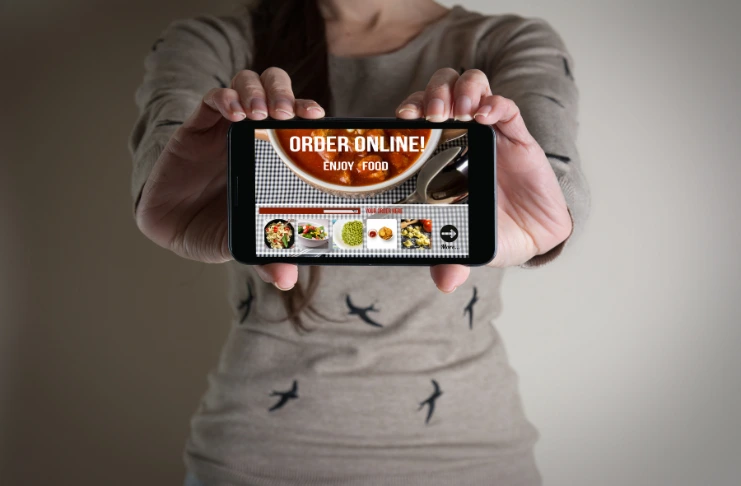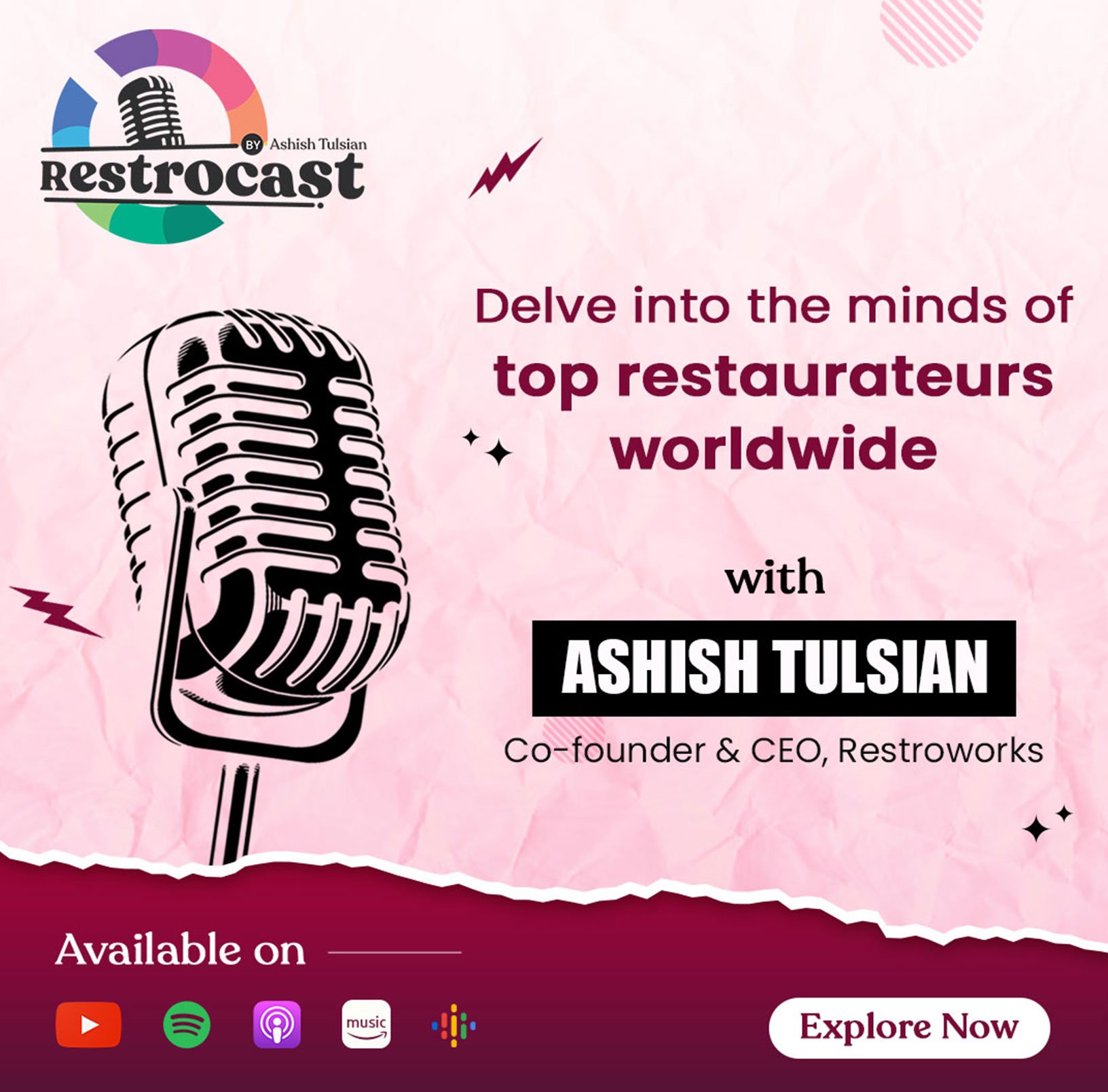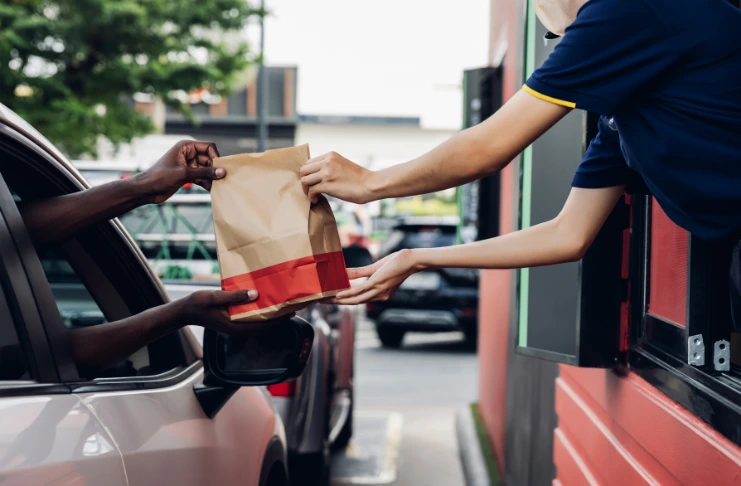
The drive-thru experience has become a defining characteristic of modern fast food restaurants, especially in the United States. What began as a simple innovation to serve customers in their cars has transformed into a high-efficiency channel driving a significant portion of revenue for leading quick-service chains. From coffee shops to burger joints, drive-thrus are no longer just a convenience—they are a critical operational and strategic asset.
The demand for contactless service and convenience skyrocketed in the post-pandemic world, making drive-through lanes more critical than ever. According to research, over 75% of fast food restaurant sales in the U.S. now come from drive-thrus. This trend isn’t just about pandemic-era behavior; it reflects a long-term shift in how customers prefer to order and receive food.
With consumers prioritizing speed of service and minimal friction, brands like Chick-fil-A, McDonald’s, and Taco Bell are heavily investing in drive-thru infrastructure, automation, and digital orders. The focus is reducing average time per order and improving order accuracy and customer satisfaction.
What Is a Drive-Thru Restaurant?
A drive-thru restaurant is a fast food establishment that allows customers to order, pay for, and receive food without leaving their vehicles. These setups typically consist of:
- Drive-through lanes with ordering kiosks or windows
- A menu board (often digital)
- A speaker and microphone system for communication
- Payment and pickup windows
The average time spent in a drive-thru is now a key metric industry leaders track. As of 2024, the average time for order completion in U.S. drive-thrus was approximately 6 minutes and 13 seconds, a notable decrease from earlier years, according to Intouch Insight’s annual drive-thru study.
Market Size & Growth of Drive-Thru Segment
The drive-thru segment is booming, and the data proves it. In the United States alone, the QSR industry was valued at $289.68 billion in 2024, with over 50% of that revenue coming from drive-thru sales.
Globally, fast food restaurants are adapting the drive-thru model across regions like Canada, Australia, the UK, and Asia-Pacific. Chains like Starbucks, KFC, and Burger King are experimenting with smaller footprint outlets, prioritizing drive-through lanes and digital orders over traditional dine-in spaces.
Key factors fueling market growth include:
- Mobile-first ordering habits
- Increased car ownership and urban sprawl
- Demand for speed, safety, and convenience
- Technology adoption (AI, machine learning, predictive analytics)
According to an NPD Group report, digital orders through mobile apps, drive-thrus, and websites account for 62% of all QSR transactions, a number that’s expected to keep rising.
Why Drive-Thrus Matter Today More Than Ever
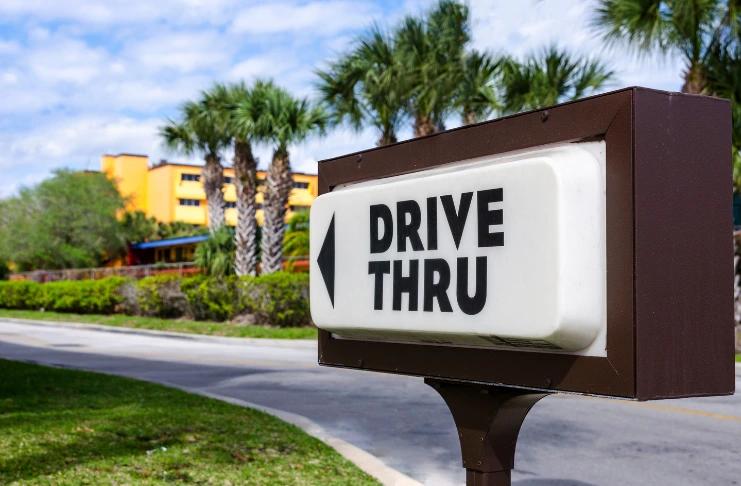
Beyond just a convenience feature, drive-thrus now represent a critical business advantage. They allow restaurants to serve more customers in less space, reduce labor costs through automation, and collect granular data on order timing, upsells, and preferences. This data can be used to improve the speed of service, increase average order value, and refine customer journeys.
Some chains, like Chick-fil-A, have become case studies in drive-thru excellence. Known for consistently ranking among the fastest and most accurate, Chick-fil-A has deployed multi-lane setups, tablet-based ordering staff, and even tent stations to improve the drive-thru experience during peak hours.
In fact, in the 2023 QSR Drive-Thru Report, Chick-fil-A posted the highest scores for order accuracy, exceeding 92%, and saw strong customer satisfaction despite a longer average time due to their high volume.
Consumer Behavior Insights & Preferences
Understanding consumer behavior behind drive thrus is critical for optimizing the drive-thru experience. Today’s fast food restaurants rely on granular data across demographics, visit frequency, preferences, and digital adoption to shape operations and marketing.
1. Demographics & Visit Frequency
Frequent drive-thru users share identifiable traits:
- Age: 57% of high-frequency Quick Service Restaurant (QSR) customers those visiting 15 or more times per month are aged 25 to 44.
- Gender: About 56% of these frequent QSR patrons are male.
- Family status: Half of them have children under 18.
On visitation frequency:
- 9% of consumers visit fast food restaurants 15+ times a month.
- 53% of customers visit drive-thrus at least five times per month.
2. Why Customers Choose Drive-Thrus
A recent QSR Drive-Thru Report found 78% of customers ranked convenience as their top motivation for using drive-through lanes. This sentiment aligns with an AYTM survey in which 81% said they were satisfied with the drive-thru convenience offered by fast food restaurants.
Other motivations:
- Speed: Rapid order delivery is a top priority.
- Social distancing: A significant factor since the pandemic.
- Family care: Parents find drive-thrus easier with children.
3. Digital Orders vs. In-Lane Ordering
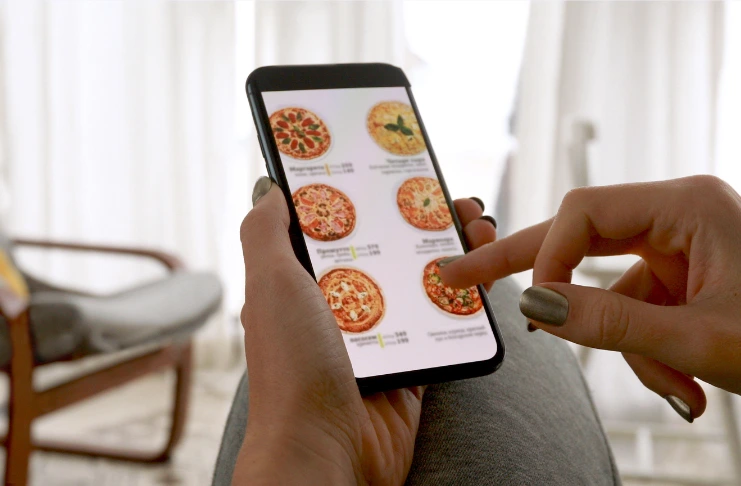
Digital orders placed via app or web are an increasingly powerful revenue driver. According to the USDA NPD CREST data, mobile and app orders represented:
- 29% of carry-out spending at QSRs by June–August 2022;
- 26% at full-service restaurants.
Third-party delivery apps also gained ground:
- QSR app delivery spending rose 108%, and FSR has grown by 249% since 2019.
Meanwhile, 31% of customers still prefer placing orders with a staff member in the lane, receiving assistance, and upsells. Digital orders improve order accuracy by reducing human error and allowing restaurants to collect vital customer preferences and behavior data.
4. The Role of Mobile Apps & Loyalty
Most leading fast food restaurants now have mobile apps, offering payment options, loyalty discounts, and personalized offers. These apps collect extensive data:
- Location, order history, and social profiles.
- Helps tailor promos and menus in drive-thrus and beyond.
5. Satisfaction: Speed, Accuracy & Experience
Consumer expectations in drive-through lanes revolve around three core factors: speed, order accuracy, and overall drive-through services.
Speed of Service
- In-door service averages vary by brand. A 2024 report found that average total service time across brands was 4:05, improved from 4:22.
- McDonald’s: 3:49; Taco Bell: 2:31.
- 2024 data shows Taco Bell’s average speed of service at 4.3 minutes, with Chick-fil-A longer at ~8 minutes.
Order Accuracy
- Overall accuracy reached 89% in 2024 (up 3 points from 2023).
- Chick-fil-A maintains high standards, often topping accuracy rankings.
Leading Drive-Thru Chains & Technology Innovations
Fast food restaurants’ drive-thru lanes have evolved into efficient, data-driven ecosystems. Brands are competing not only on taste but increasingly on speed of service, order accuracy, and tech-enabled optimizations across drive-thru lanes and through digital orders.
1. AI Voice Ordering
- Only 4–19% of customers have experienced AI voice takeovers, but data from voice-AI interactions show they are ~29 seconds faster than traditional human operators.
- Accuracy jumps to ~95% with voice-AI, compared to ~89% average human error rate.
- Taco Bell, Wendy’s, and KFC are scaling AI voice ordering across hundreds of lanes in 2024–2025.
- However, McDonald’s and some locations experienced issues, leading to temporary rollbacks of voice-AI pilots.
2. Multi-Lane & Mobile App Lanes
- Taco Bell’s “Defy” concept embraces four drive-through lanes, with separate lanes designated for mobile orders, third-party delivery pickups, and on-site customers.
- Tim Hortons tests tandem lanes, two ordering points feeding one kitchen, to double throughput in constrained real estate.
- Dedicated mobile app-only lanes help streamline digital orders, reducing queue time and increasing customer satisfaction.
3. Smart Digital Menu Boards & Personalization
- With AI personalization, Outdoor Digital Menu Boards (ODMBs) adjust content based on app ordering history, time of day, and real-time demand.
- McDonald’s piloted Dynamic Yield-powered ODMBs across 12,000 drive-thru locations, optimizing upsell strategies and reducing dwell time.
- Burger King, Popeyes, and Tim Hortons roll out tailored board messaging powered by machine learning.
4. Boosting Order Accuracy
- Computer vision systems monitor order assembly for accuracy, while advanced noise-suppressed speakers reduce errors from communication breakdowns.
- Voice-AI has been proven to raise accuracy to ~95%, significantly higher than human baseline accuracy (~89%).
- Chick‑fil‑A and McDonald’s maintain best-in-class accuracy at 93%, while Taco Bell’s accuracy is around the industry average of ~85%.
5. Data & Upselling
- AI-driven ODMBs and voice systems track upsell effectiveness, providing data to tailor promotions, reduce bottlenecks, and raise the average ticket.
- Tools like Presto Vision and video analytics platforms identify regular customers; smarter upselling is possible as they spot habits from license plate or phone detection.
- Brands using data-driven recommendations reported a 5% boost in upsell performance.
6. Real-World Chain Performance
- Taco Bell: Fastest drive-thru (~4.3 min), deploying voice-AI in ~500 lanes by 2025.
- Chick‑fil‑A: Tops accuracy (92–93%), satisfaction (~99%), despite longer average time (8 min) and heavier traffic (~5 cars per lane).
- McDonald’s: Quick service (~3:49), ties Chick‑fil‑A in accuracy, but mixed results from AI pilots.
- Wendy’s: 100+ lanes using “FreshAI” to cut wait by ~22 seconds while maintaining ~99% accuracy.
- KFC/Arby’s: Strong in speed and upselling; expanding AI voice pilots globally.
Operational Metrics & Benchmarks
Efficient drive-thru lanes hinge on robust performance metrics, which help fast—food restaurants optimize operations and boost profitability. Key metrics like cars per hour, average total time, window dwell time, speed of service, and order accuracy form the backbone of daily performance tracking.
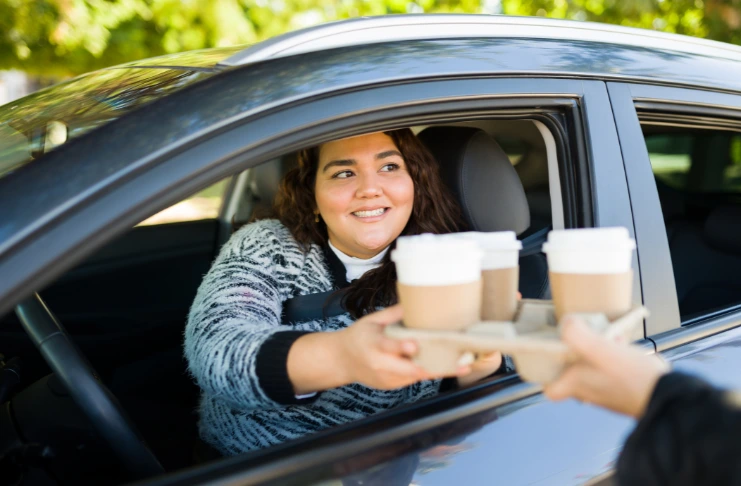
1. Cars Per Hour
The number of cars per hour is a vital KPI. According to Solink, QSRs aim to maximize throughput during peak periods like breakfast and lunch. Typical benchmarks:
- A well-managed lane processes up to 17–18 cars/hour, especially when using voice-AI, compared to ≈16 cars/hour without it.
- This velocity is crucial: an extra car per hour can yield an additional $185,600 annual revenue for a 50-location chain.
- During Q3 2020, drive-thru-focused chains served 30 million more cars than the previous year, with order times averaging 17 seconds faster.
Why it matters: Higher throughput means more customers served, directly impacting top-line results.
2. Average Total Time & Window Dwell Time
- The average total time in 2023 was ≈5 minutes 49 seconds (349.3 seconds)—under 6 minutes.
- From 2022 to 2024, total time dropped from 6:19 to 5:29 as brands optimized processes.
- The fastest chains—Taco Bell, KFC, and Arby’s—now take 4–4.5 minutes to complete.
- Window dwell time (time at payment/pickup) varies, but reducing it is key to maintaining flow.
A 30-second reduction per car (from voice-AI) can save 10% of total service time, which is significant when multiplied by hundreds of vehicles daily.
3. Cars in Line & Abandonment
The number of vehicles waiting offers insight into demand and perceived drive-thru experience:
- In 2024, Chick‑fil‑A averaged 3.44–5.45 cars per lane, depending on the source.
- McDonald’s averaged 1.48 to 3.13 cars, while Wendy’s ranged from 1.01 to 2.67.
- Reddit users note that Chick‑fil‑A’s “sheer volume” doesn’t reduce throughput, despite long queues, cars move quickly.
Insight: High demand combined with strong service speed ensures long lines don’t deter customers.
4. Speed of Service Benchmarks
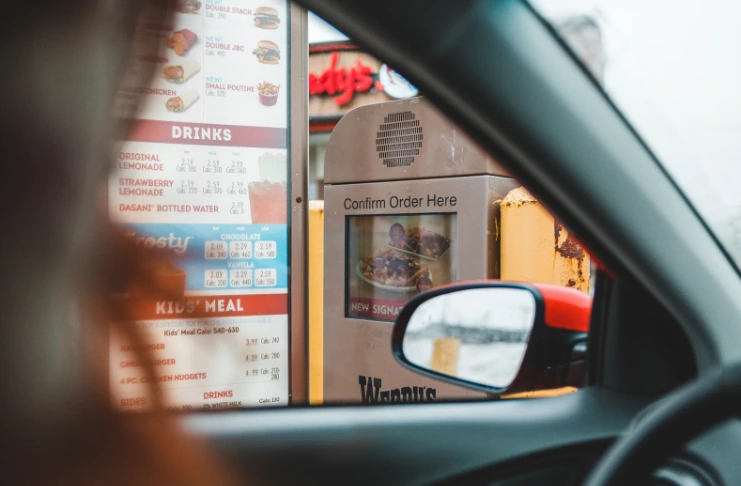
Speed of service is often the most visible KPI:
- In 2024, the average time was 5:29, an improvement from previous years.
- Standard benchmarks:
- Taco Bell: ~4.3 min (~279 sec)
- KFC: ~5.07 min (~304 sec)
- Chick‑fil‑A: ~7–8 min (~436–480 sec), but when adjusted per car, matches speed leaders.
- Patience tolerance: Customers are generally willing to wait up to 5–7 minutes before abandoning the line.
5. Order Accuracy
- In 2024, order accuracy hit a chain-wide average of ≈89%.
- Chick‑fil‑A and McDonald’s led at 92–93%, while Wendy’s lagged lower.
- AI-powered lanes deliver 95 %+ accuracy, surpassing traditional methods.
Impact: High-order accuracy reduces rework, speeds up operations, and enhances satisfaction.
6. Cars Per Hour vs Time Efficiency
Analyst William Binkley emphasizes throughput: “The faster you serve customers, the more vehicles you can process per hour… Slow drive-thru causes bottlenecks that limit peak-hour capacity”.
- Voice-AI lifts throughput to ≈18 cars/hour, compared to ~16 cars.
- Reducing service time even by 20 seconds per car can significantly impact daily capacity and revenue.
7. Practical Driver Strategies
Fast food restaurants employ multiple tactics:
- Staff Training & KPIs
- Staff are trained on four pillars: speed of service, order accuracy, upselling, and customer interaction.
- Gamified dashboards like timers and car-count incentives motivate performance.
- Tech Enhancements
- Voice-AI for faster, accurate ordering.
- Multi-lane systems, mobile lanes, and ODMBs to reduce friction.
- Layout Optimization
- Dual/triple lanes, clear signage, and layout design minimize window dwell time and congestion.
- Data & Monitoring
- Real-time dashboards track key metrics, allowing adjustments (staffing, signals, upsell prompts).
Conclusion
Drive-thrus have become essential to the success of fast food restaurants, offering unmatched convenience, speed, and efficiency. As digital orders rise and customer expectations shift, brands leverage data, AI, and multi-lane innovations to enhance the drive-thru experience. Leaders like Chick-fil-A and Taco Bell prove that balancing speed of service with order accuracy drives both satisfaction and revenue. With metrics like average time and cars per hour guiding operations, drive-thrus are evolving into high-performance hubs. For restaurants looking to grow, optimizing drive-through lanes isn’t optional; it’s a strategic necessity for the future of fast food.
Frequently Asked Questions
According to QSR Magazine, drive-thru orders account for approximately 75% of sales at U.S. fast food restaurants. This dominance highlights how essential drive-thru service is to the quick-service model, especially post-pandemic. Customers prefer the speed, safety, and convenience of staying in their vehicles, making drive-thrus a primary revenue channel for major fast food brands.
Yes, drive-thrus significantly boost sales by increasing throughput and reducing wait times. Restaurants with optimized drive-thru lanes can serve more customers per hour, increasing revenue during peak times. Technologies like voice-AI and digital ordering also improve upselling, accuracy, and speed of service, resulting in higher average check values and greater overall profitability for fast food chains.
Absolutely. Drive-throughs are thriving in the U.S., increasing usage even after the pandemic. Brands like Chick-fil-A, Taco Bell, and McDonald’s have expanded their drive-thru operations with multi-lane models and digital innovations. With growing consumer demand for convenience and speed, the drive-thru experience remains a key driver of growth in the American fast food industry.
Yes, drive-thrus generally generate more revenue than dine-in or walk-in service. They allow restaurants to serve more customers quickly, particularly during peak hours. Enhanced efficiency, combined with data-driven upselling and order customization, leads to higher average ticket sizes. Many chains report that over 50–70% of their total sales come from drive-thru transactions, proving their substantial financial impact.

